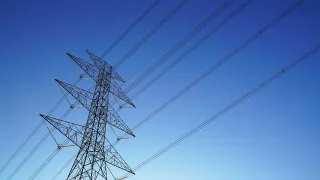In Finland, distribution network companies are obliged to improve and maintain the resilience of electricity distribution to weather related interruptions at an adequate level. Current legislation and the regulatory model of the distribution network companies drive companies to do underground cabling in order to meet their obligations. A recent study by the EL-TRAN Consortium proposes microgrids as an alternative to underground cabling.
"Local microgrids could become an overall cost-effective solution in rural areas. This arrangement would presume that technologically feasible and applicable solutions and their costs are assessed as a whole", says Sanna Uski, senior scientist at VTT. A microgrid solution would mainly be based on the network customer's own electricity production and battery storage. The distribution network company could partially cover the battery costs and participate in the planning and maintenance of the microgrid while avoiding the more costly underground cabling option.
A microgrid is a small local consumption and production cluster, which in the normal mode is connected to a wider power system, but which is also able to function as an independent island sporadically. Microgrids are currently a very topical technology trend worldwide.
Nowadays, farming can use a significant amount of electricity and the security of uninterrupted power supply – even from short interruptions – is very important. Farms have an inherent potential of producing their own energy and even electricity. Case-specifically, an investment in the farm's own electricity production may currently be on the borderline of being cost-effective compared to buying electricity from the grid. However, a case study conducted by the EL-TRAN Consortium found that with a suitably dimensioned combined heat and power plant (micro CHP), solar panels, and a battery, a large dairy farm could be able to operate for several days independently as an island microgrid ensuring an uninterrupted electricity supply at any time of the year.
For a network company, the costs of underground cabling become substantial when the cabling distances are longer or the terrain is more challenging. In the case study, the equivalent annual costs for the microgrid were only slightly more expensive than the base case for the dairy farm. In the base case, the farm acquires the electricity it needs from the grid, and the network company invests in the underground cabling. If the distribution network company participated in the microgrid arrangement, the solution could be the most cost-effective option for both the customer and the network company. In addition to the farm, other network customers in the area could also be connected to the microgrid.
The current legislation in Finland prevents network companies from owning battery storages and obligates them to maintain a certain level of weather resilience in the distribution network. Furthermore, voluntary agreements between customers and network companies are not acknowledged by legislation. There are thus no existing models for the division of expenses in alternative solutions. There is a need for amendments in the legislation and the regulatory model of the network companies.
The EL-TRAN Consortium is coordinated by the University of Tampere. It is part of the Strategic Research Programme A Climate-Neutral and Resource-Scarce Finland funded by the Strategic Research Council (SRC) at the Academy of Finland.
https://www.aka.fi/en/strategic-research/
PRESS RELEASE BY THE UNIVERSITY OF TAMPERE 6 February 2018



